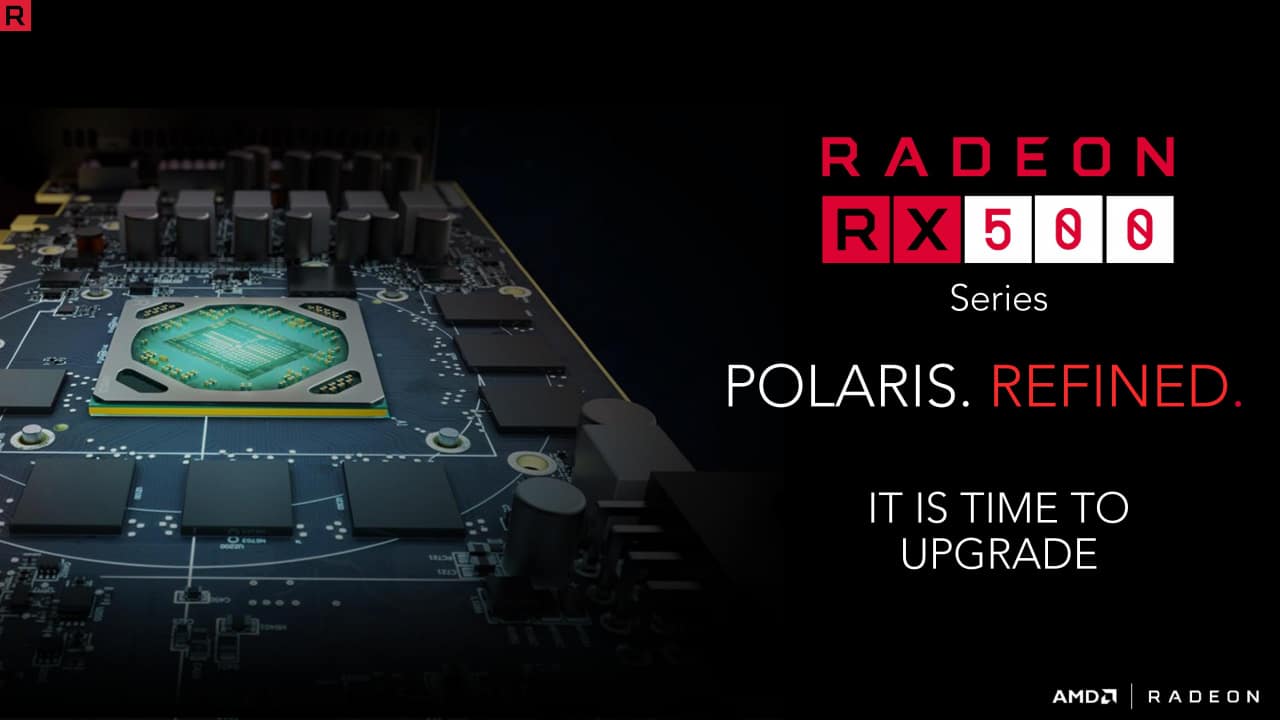In the summer of 2016, AMD launched the Polaris architecture, which was the first to take the step to 14 nanometers. At launch, there were two graphics circuits, Polaris 10 for Radeon RX 480 and RX 470, as well as Polaris 11 for the entry-level model RX 460 and all kinds of graphics cards for laptops.
Now AMD is launching what they call “improved Polaris”. At first glance, these are exactly the same circuits as before, but optimizations in the manufacturing process mean that they draw less current at no or low load and that they can reach higher clock frequencies than before.
The circuit that was previously called Polaris 10 changes with the Radeon RX 500 series name to Polaris 20, which in addition to manufacturing technology retains the same properties as before. Like the Polaris 10, the Polaris 20 is released in two variants, one full-scale and the other slightly scaled-down.
Specifications: AMD Radeon RX 580 and RX 570 “Polaris 20”
RX 580 | RX 480 | RX 570 | RX 470 | |
|---|---|---|---|---|
Technical | 14 nm Samsung | 14 nm Samsung | 14 nm Samsung | 14 nm Samsung |
Circuit | Polaris 20 | Polaris 10 | Polaris 20 | Polaris 10 |
Circuit surface | 232 mm2 | 232 mm2 | 232 mm2 | 232 mm2 |
Transistors | 5.7 billion | 5.7 billion | 5.7 billion | 5.7 billion |
Architecture | GCN 4.0 | GCN 4.0 | GCN 4.0 | GCN 4.0 |
Streamprocessorer | 2 304 st. | 2 304 st. | 2 048 st. | 2 048 st. |
Texture units | 144 st. | 144 st. | 128 st. | 128 st. |
Raster units | 32 st. | 32 st. | 32 st. | 32 st. |
Clock frequency | 1 257 MHz | 1 120 MHz | 1 168 MHz | 926 MHz |
GPU Boost | 1 340 MHz | 1 266 MHz | 1 244 MHz | 1 206 MHz |
Computational power | 6 175 GFLOPS | 5 834 GFLOPS | 5 095 GFLOPS | 4 940 GFLOPS |
Memory bus | 256-bit | 256-bit | 256-bit | 256-bit |
Memory amount | 4/8 GB GDDR5 | 4/8 GB GDDR5 | 4/8 GB | 4/8 GB |
Memory frequency | 8 000 MHz* | 8 000 MHz* | 7 000 MHz | 6 600 MHz |
Memory bandwidth | 256 GB/s | 256 GB/s | 224 GB/s | 211,2 GB/s |
Power supply | 8-pin | 6-pin | 6-pin | 6-pin |
TBP | 185 W | 150 W | 150 W | 120 W |
* Applies to variants of Radeon RX 580 and RX 480 with 8 GB GDDR5. Models with 4 GB have a memory frequency of 7,000 MHz and a bandwidth of 224 GB / s.
The new top model is called Radeon RX 580 and replaces RX 480. It is about the same hard specifications with 2,304 stream processors, 144 texture units, 32 raster units and a 256-bit memory bus. The model is intended to be paired with 8 GB GDDR5, but partner manufacturers who want to push prices can also choose to equip it with only 4 GB.
The differences are instead noticeable in the clock frequencies, where the Radeon RX 580 has the base mode 1,257 MHz with a maximum turbo of 1,340 MHz. This results in a theoretical performance increase of 6 percent compared to the RX 480. At the same time, the graphics card’s stated maximum power consumption takes a real step up, from 150 to 185 W.
The model below is called the Radeon RX 570 and completely replaces the sonic RX 470. Here too, AMD has not reinvented the wheel, but it is about “the same” graphics card as before with higher clock frequencies. The largest step up takes the base frequency, from 926 to 1,168 MHz, while the turbo frequency takes a smaller step that corresponds to a performance increase of 3 percent. Here, too, power consumption takes a step up, from 120 to 150 W.
Radeon RX 580 and RX 570 will be launched sharply today and will be available in stores. The recommended prices for the RX 580 with 8 and 4 GB GDDR5 are SEK 2,599 and SEK 2,269, respectively, while the RX 570 is SEK 1,899.
AMD Radeon RX 560 and RX 550
Alongside the Radeon RX 580 and RX 570, the Radeon RX 560 is announced, succeeding the RX 460. Here the differences are greater as the RX 560 introduces full-scale Polaris 11 for desktops, with 1,024 stream processors, a 128-bit memory bus and 4 GB GDDR5. This together with higher clock frequencies gives a theoretical performance increase of 21 percent.
Below this is a brand new graphics circuit, the long-famous Polaris 12 or “Lexa”. This is a new minimum with only 512 stream processors, a 128-bit memory bus and 2 GB of GDDR5 memory. The idea with this card is to provide an affordable alternative to Intel’s integrated graphics chips.















